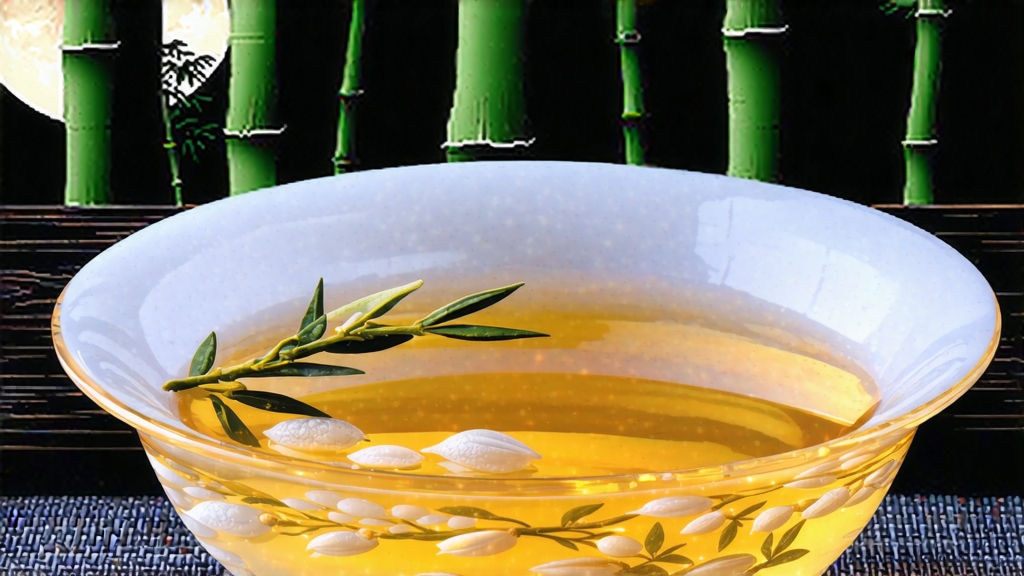
Among the six great families of Chinese tea, white tea is the least theatrical yet the most elusive; it is oxidised by nothing more than air, time, and the patience of its maker. Within this minimalist lineage, Bai Hao Yin Zhen—“Silver Needle wrapped in White Down”—reigns as the aristocrat. International drinkers often meet white tea first through bagged blends labelled merely “white”, but to encounter Yin Zhen in its original form is to discover why Song-dynasty poets called white tea “the moon solidified”.
History: from imperial tribute to quiet renaissance
The first verifiable record appears in the Song Hui Yao, 1107 CE, listing “white cakes from Fuding” among tributes sent to Emperor Huizong. Those cakes were not today’s loose needles; they were compressed cakes of large leaves lightly baked, a fashion that vanished after the Yuan dynasty. The modern, all-bud Yin Zhen emerged during the Daoguang reign (1821-1850) when market demand for delicate teas coincided with improved road access to Fuding’s highlands. By 1891 Fuding exporters were shipping “Pekoe Silver Needle” via Fuzhou’s treaty port to London and St Petersburg, where it fetched prices above first-flush Darjeeling. The 20th-century wars disrupted trade; bushes were uprooted and knowledge fragmented. Only in 1965 did the Fujian provincial government re-establish state-run Yin Zhen workshops, and in 2006 the EU granted Fuding white tea Protected Designation of Origin status, igniting the current global renaissance.
Terroir: why Fuding tastes like morning mist
True Yin Zhen is produced in two micro-zones: Fuding county and neighbouring Zhenghe, both within the subtropical marine climate belt of northern Fujian. Day-night temperature differentials of 10 °C slow bud growth, concentrating amino acids; red-yellow lateritic soils rich in iron and aluminium give a faint flinty echo; and the Taimu mountain range traps cloud cover that filters sunlight into a soft, diffused glow. The local cultivar, Fuding Da Bai Hao, develops buds up to 3.5 cm long, twice the size of common tea varieties, and each bud is sheathed in a dense pubescence that reflects light like frost—hence the name “silver needle”.
Harvest calendar: the silent race
Plucking begins when the last spring frost is still possible, usually between 15 March and 10 April. Only undamaged, unopened buds picked before noon are accepted; experienced pickers can gather just 500 g in a full day. The buds must never be pinched—only lifted and snapped with the nail of the index finger to avoid bruising. Within four hours they are carried in bamboo baskets lined with banana leaves to the withering shed, beginning a transformation that looks like nothing is happening.
Craft: doing almost nothing, at the right moment
White tea’s craft is subtraction, not addition. There are only two authorised steps: withering and drying. Yet within those steps lie micro-decisions that decide whether the finished tea will taste like dewy apricot or boiled cardboard.
- Outdoor withering: buds are spread 2 cm thick on water-woven bamboo trays and left under 60 % shade for 30–60 minutes, depending on humidity. The goal is to evaporate surface moisture so that cell walls soften, preparing the bud for enzymatic oxidation so subtle it is called “non-enzymatic browning” in academic papers.
- Indoor withering: trays rest on tiered racks in a 26 °C, 65 % RH room for 36–48 h. Every two hours the tea master lifts a tray, tilts it 30°, and fans the air gently with a palm-leaf fan—an action that looks ceremonial but equalises moisture. The buds lose 70 % of their weight and acquire a faint lilac aroma.
- Selective solar finish: if the morning of day three gifts a 22 °C breeze and 50 % humidity, the trays are carried outside for a 20-minute “sunbath” that halts oxidation and locks in a shimmering top note. If weather refuses, a 40 °C electric dryer is used instead, but connoisseurs claim the cup lacks the “live” energy.
- Final drying: 60 °C for 15 minutes reduces moisture to 5